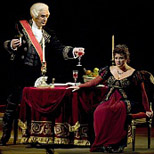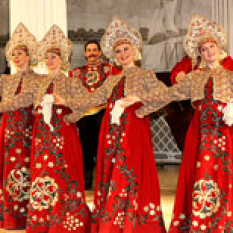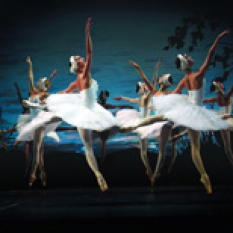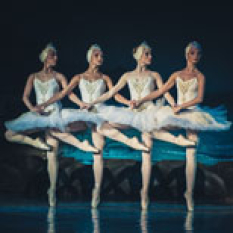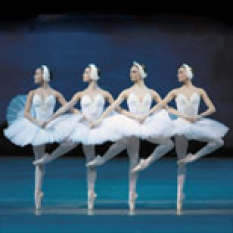Tosca (Mikhailovsky Theatre, opera) - 18 January 2025 at 18:00
Genre: Opera | Language: Italian | Age restriction: 12+ | Length: 2 hours 50 minutes | Intermissions: 2 | Opening night: 17 June 2009
Featured in: Mikhailovsky (ex. Mussorgsky) Theatre January 2025 | Opera in St.Petersburg in January 2025 | Opera in Mikhailovsky (ex. Mussorgsky) Theatre in January 2025
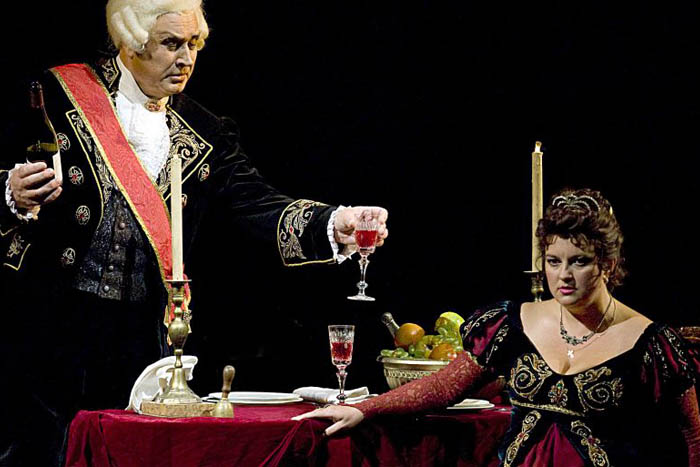
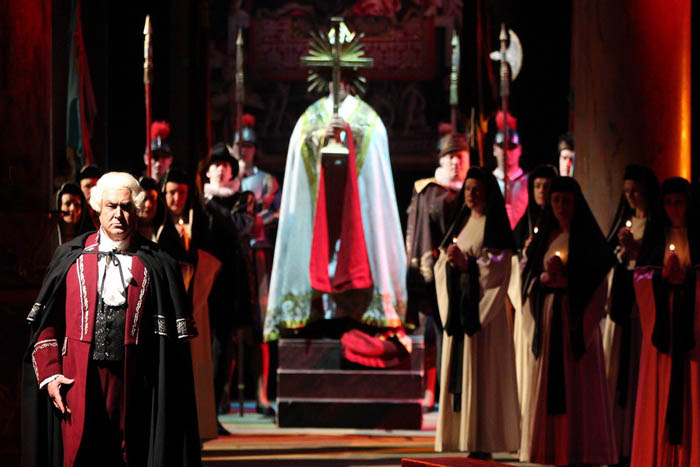
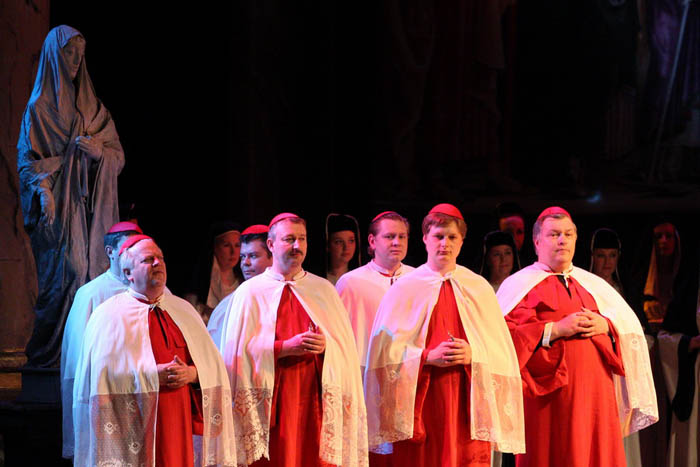
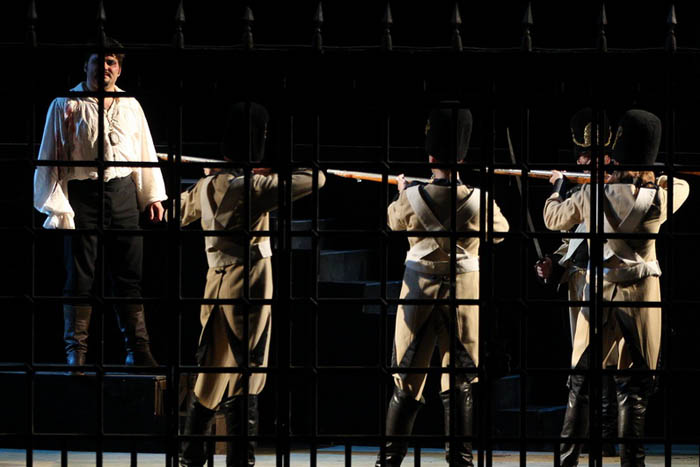
Credits
Libertto: Luigi Illica and Giuseppe Giacosa after the play Floria Tosca by Victorien SardouProduction: Stanislav Gaudasinsky
Set and Costume Designer: Vyacheslav Okunev
Artistic Director and Chief Conductor of the Mikhailovsky Chorus: Vladimir Stolpovskikh
Director of the Reconstruction: Yulia Prokhorova
Assistant to the Director: Vyacheslav Kalyuzhny
Chorus Master: Alexey Dmitriyev
Lighting Design: Mikhail Mekler
Principal Pianist: Maria Kopyseva
Artists
Conductor — Dmitry JurowskyDescription
Premiere at the Mikhailovsky Theatre: February 28, 1999
Premiere of the revival: June 17, 2009
Victorien Sardou’s drama La Tosca was created for the great actress Sarah Bernhardt. Puccini saw Sardou’s play when it was touring Italy in 1889 and, after some vacillation, obtained the rights to turn the work into an opera six years later. Turning the wordy French play into a succinct Italian opera took four years, during which the composer repeatedly argued with his librettists and publisher. The work is a melodramatic piece set in Rome in June 1800, with the Kingdom of Naples’s control of Rome threatened by Napoleon’s invasion of Italy. It contains depictions of torture, murder and suicide, yet also includes some of Puccini’s best-known lyrical arias, and has inspired memorable performances from many of opera’s leading singers. The dramatic force of Tosca and its characters continues to fascinate both performers and audiences, and the work remains one of the most frequently performed operas.
At the Mikhailovsky Theatre one can hear the best soloists of the house.
Synopsis
Act I
The Church of Sant’Andrea in Rome. Cesare Angelotti, former Consul of the Republic of Rome and now a political prisoner who has escaped from prison, is seeking shelter here. He hides in the chapel of his sister, the Marchesa Attavani. Artist Mario Cavaradossi is working on an image of Mary Magdalene. The sacristan is shocked that the painting resembles the Marchesa Attavani. After the sacristan leaves Angelotti appears from the chapel and begs the artist for help. On appearance of the famous singer Floria Tosca, the artist’s lover, he hides again. The singer also notices the painting of Mary Magdalene resembles the Marchesa Attavani. Tosca is jealous but the artist manages to pacify her. Floria leaves the church. Gunshots are heard – the escape of the political prisoner has been discovered. Cavaradossi offers the fugitive refuge in his villa. The men hurry away.
The sacristan returns surrounded by a laughing crowd of choir boys. They falsely believe that Napoleon has been defeated and are there to sing thankful hymns. Floria Tosca is to perform in the celebration too.
Scarpia, chief of Roman police, arrives with Spoletta and Sciarrone in search of the escaped prisoner. They expect to discover Angelotti in the Attavani chapel but find only an empty food basket and the fan of the Marchesa.
Seeing Tosca return to the church, Scarpia decides to seize his opportunity. Scarpia arouses Tosca’s jealousy by mentioning the the painting by Cavaradossi and producing Marchesa Attavanti’s fan, and she departs in anger. He orders his agent to follow her, hoping that Tosca will lead them to the artist’s secret hiding place.
A celebratory mass begins.
Act II
Scarpia’s room at Palazzo Farnese. He sends a servant to give a note to Tosca to invite her to come to his place when she finishes with her recital. His expectations are only half fulfilled: Tosca did lead them to Cavaradossi who has now been arrested but Angelotti has escaped. Scarpia closely questions the painter, but Cavaradossi reveals nothing. Tosca arrives and the painter whispers to her not to say anything about Angelotti. Scarpia sends Cavaradossi off to be tortured. Tosca can’t stand his sufferings; she loses her self-control and reveals the secret hiding place in the garden. Cavaradossi is brought in. He hears the chief of police and understands that the secret has been revealed. The painter is desperate. Sciarrone enters to announce that earlier reports were mistaken: Bonaparte has defeated the royalist forces at the battle of Marengo.
The painter is to be executed the next morning. Tosca begs Scarpia to spare Cavaradossi. Scarpia avows his passion for Tosca and demands her as the price of Cavaradossi’s life. Feeling as if she has no alternative, Tosca finally agrees to yield. Scarpia orders Spoletta to organize for a mock execution of Cavaradossi, while Tosca demands a safe-conduct for herself and the painter to leave the country. As Scarpia advances to embrace her, she plunges the knife into him. Scarpia is dead. Tosca leaves the palace.
Act III
Top floor of Castel Sant’Angelo where Cavaradossi is to be executed. Tosca rushes in and explains it is to be a mock execution. Soldiers appear. They fire and the artist falls to the ground. Floria calls his name in vain: the execution was real. Spoletta, who has discovered Scarpia’s death, enters with soldiers, denouncing her as a murderer. Tosca throws herself from the parapet.
